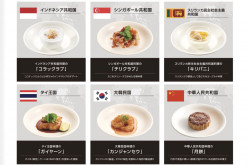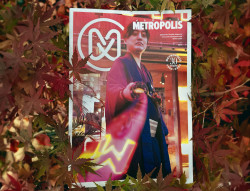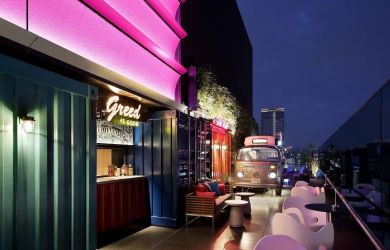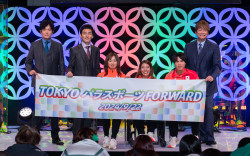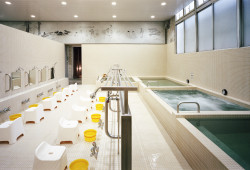
Originally published on metropolis.co.jp on August 2010

Photos courtesy of Wafrica
When Omotesando Hills held a market for innovative kimono designs last month, one particular corner stood out. Indigo-blue cotton with vivid splashes of orange, undulating patterned fabric ornamented with shiny turquoise cubes next to earthy ochre and brown textiles: the second collection by Wafrica certainly puts a distinctive twist on traditional Japanese clothing.
These African kimonos are the brainchild of Odasho, a well-regarded kimono maker with a 150-year history, and Cameroonian concept car designer Serge Mouangue. “In the beginning, it was just a game,” says Mouangue, who now lives in Tokyo. “[I was] like a kid that was interested in creating a new thing by putting things together to find answers to questions that I was asking myself. It was the reaction of the Japanese that encouraged me to provide more.”
Aby, a Senegalese hairstylist (and recent Metropolis cover girl), also played an important role: “It was when I saw her that I thought, ‘Wafrica is possible now.’”
However, merging two very different approaches to beauty hasn’t been an easy task. “The African aesthetic is about pulse, rhythm and strength,” says Mouangue, while “the Japanese one is based more on absence, detachment and withdrawal to create presence.” By combining these, he wants to create a third aesthetic, a conversation between two ancient and strong identities: Japan and Africa.
Wafrica clothes are more than just beautiful items: the patterns tell stories and African fairytales, which Odasho has to be careful not to alter when sewing the garments. The kimono maker is currently working on dyeing fabrics with Mouangue’s graphics, which would also allow the designer to make the stories easier to understand. He shows us one of his recent drafts, depicting a West African tale about a beautiful woman crossing the desert together with magical animals.
Mouangue has been interested in aspects of Japanese culture, like calligraphy and cinema, since his youth. He took courses in Japanese language and culture while studying art and design at l’ENSCI-Les Ateliers in Paris, meaning that he wasn’t completely unprepared when automaker Nissan offered him a job as a concept car designer three years ago.

When he arrived in Japan, Mouangue was instantly drawn to the kimono and the attitude it creates when worn. Though it was once considered everyday clothing, the garment is now usually reserved for formal occasions, and he aims to design a more casual version that is appealing to younger generations. “I want to create an urban and more wearable type of kimono, just like jeans were the urban version of leather pants traditionally worn by cowboys,” he says, sitting on a light wooden bench that he also designed. “The use of cotton already gives the kimono a new vibration and a more relaxed feel.”
As he talks, Mouangue sketches a kimono that pursues this idea even further, with a zipper on one side, a hood, an obi that functions as a laptop holder, and a shorter hem that lets women show their legs.
Though reactions to Wafrica have generally been very positive, the designer has also faced a bit of criticism. “I had one very aggressive email, maybe a year and a half ago,” he recalls. “It was a bit shocking, and at the same time it makes you think that you really have to be careful when you use this kind of icon: you don’t want to break them. I understand that some people can have that kind of reaction, because they feel you are taking something out of their culture and messing with it. But that is not the objective. It’s more about harmony, ambiguity, complexity, [a] new story, new aesthetics.”
And the “African kimono” is only the first step. Mouangue says he’s working on a variety of designs, including lacquer masks shaped like the ones found in West African villages, but manufactured by Japanese craftsmen using traditional techniques. He is also preparing to show his designs outside Japan, with an exhibition at the New York Museum of Arts and Design this November, followed by a display at the World Festival of Black Arts in Senegal.
For more information, see www.wafrica.jp and www.odasho.co.jp. Wafrica will participate in “Tokyo Diversity” at 3331 Arts Chiyoda until Aug 29.
3331 Arts Chiyoda
Tokyo Diversity. Various media. Until Aug 29, free. 3331 Arts Chiyoda, 6-11-14 Soto-Kanda, Chiyoda-ku. Open Tue-Thu & Sun noon-7pm, Fri-Sat noon-8pm, closed Mon. Nearest station: Suehirocho. http://www.3331.jp/en/

